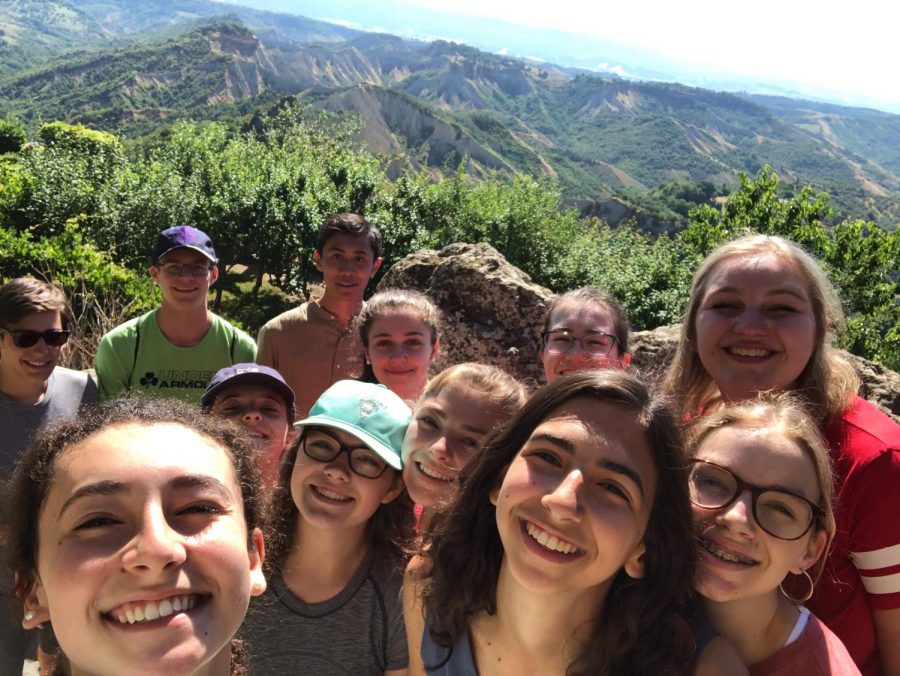Is it Worth the Nostalgia? A Classics Tour Review
students posing in an Italian village
October 23, 2019
Our minds return to summer as the Chicago autumn makes its less-than-welcome way into our lives again. While some think of Lollapalooza and lake houses, a certain group of juniors and seniors reflect back on their once in a lifetime trip to Europe.
From the middle of June to early July, 31 Loyola Academy students travelled to Greece and Italy, myself included. For three weeks, we studied classical and classical influenced art, architecture, and history. Though we faced difficulties along the way, some of us have begun to feel nostalgic for the trip.
A trip to the Mediterranean seems to be relaxing and fun at first glance; however, we students were faced with challenges we hadn’t fully anticipated. While we knew the trip counted for a course credit and, as such, we would be doing classwork on the trip, there was no way of knowing the exact amount of work that would pile up over the trip. It was a semester’s worth of work packed into three weeks — we were doing worksheets, taking quizzes, and writing journal entries all while in the Mediterranean heat. That’s enough to stress any student out.
Perhaps the amount of work would have been more bearable if we had not been required to wake up early each morning and spend most of the day walking around in places with limited shade. While myself and the other students know that the teachers cannot control the heat or lack of shade, we do recognize that the teachers and travel agency had some say over how our days were planned. Long hours could have potentially been avoided.
Our days mostly consisted of guided or electronic tours around the sites we visited. While the information we learned was fascinating, I felt as though the manner in which we learned it became tedious and boring, almost frustratingly so.
I do believe that we should have been allowed more time to ourselves, to allow us breaks from tours and coursework. We were given some, mostly during lunch breaks, but I feel as though we could have used more.
This applies to the teachers as well; I realize that chaperoning 31 students while in a foreign country could be overwhelming, especially on top of sunburns, sore feet, and the necessity to grade work. A change in schedule planning could have aided both students and teachers.
The trip wasn’t all bad, though, despite all these hardships.
We were able to learn an abundance of new knowledge about a variety of material outside of a regular classroom setting. Being able to witness in real life the history we had previously learned about was nothing less than phenomenal.
The food was mind blowing, and there was a large opportunity to try new dishes. Everywhere you went, whether in Greece or Italy, there was something brand new like squid tentacles or authentic Italian pizza topped with prosciutto. Not to mention the gelato! We all may or may not have developed addictions to the refreshing, flavorful dessert.
There were so many small towns with amazing views — there was never a dull location, and each had its charm. The small coastal towns of Greece and the Italian countryside are unforgettable.
The friendships that were made, the jokes that were shared, and the laughter that was experienced was, however, by far the best part of the trip. Thirty-one upperclassmen spending three weeks together resulted in its fair share of humour, fun, and happy memories.
So while we worked hard, we were able to play almost as hard. The trip was worth it, given all its new experiences and knowledge. As difficult as it was in the moment, the Classic Tour was a wonderful trip. It could have been improved, and it hopefully will be for future Greek and Latin students; however, I can surely say that the positive aspects of the trip indubitably outweigh the negatives. It is absolutely worth looking back fondly upon.


